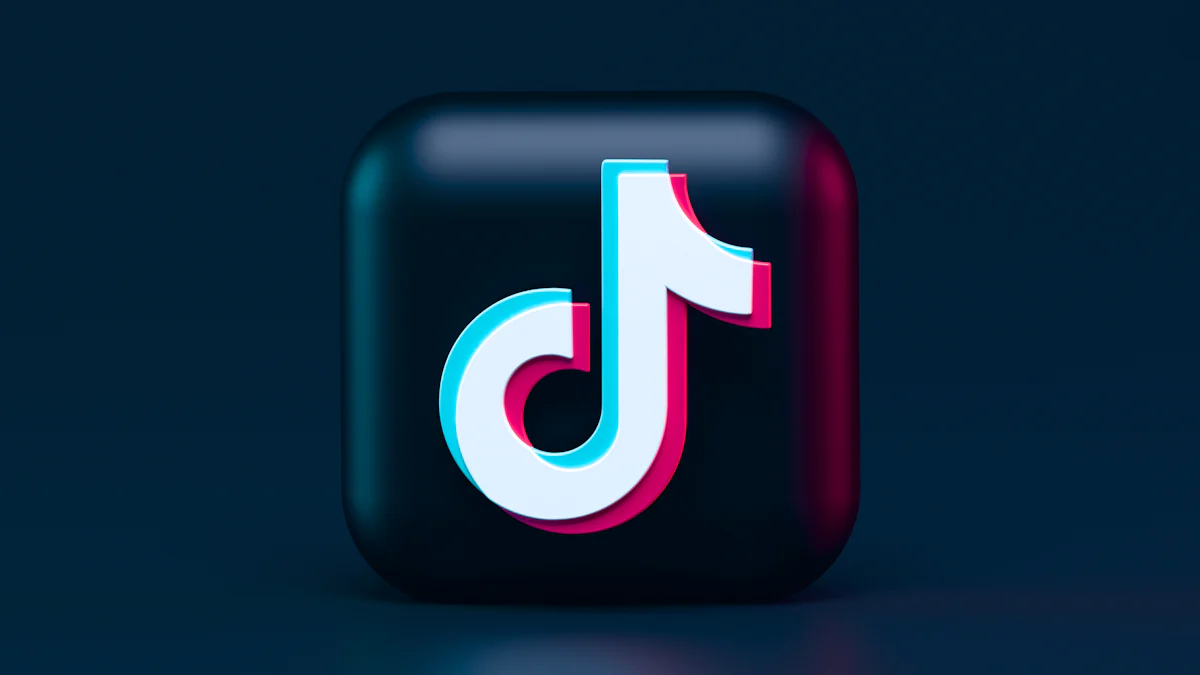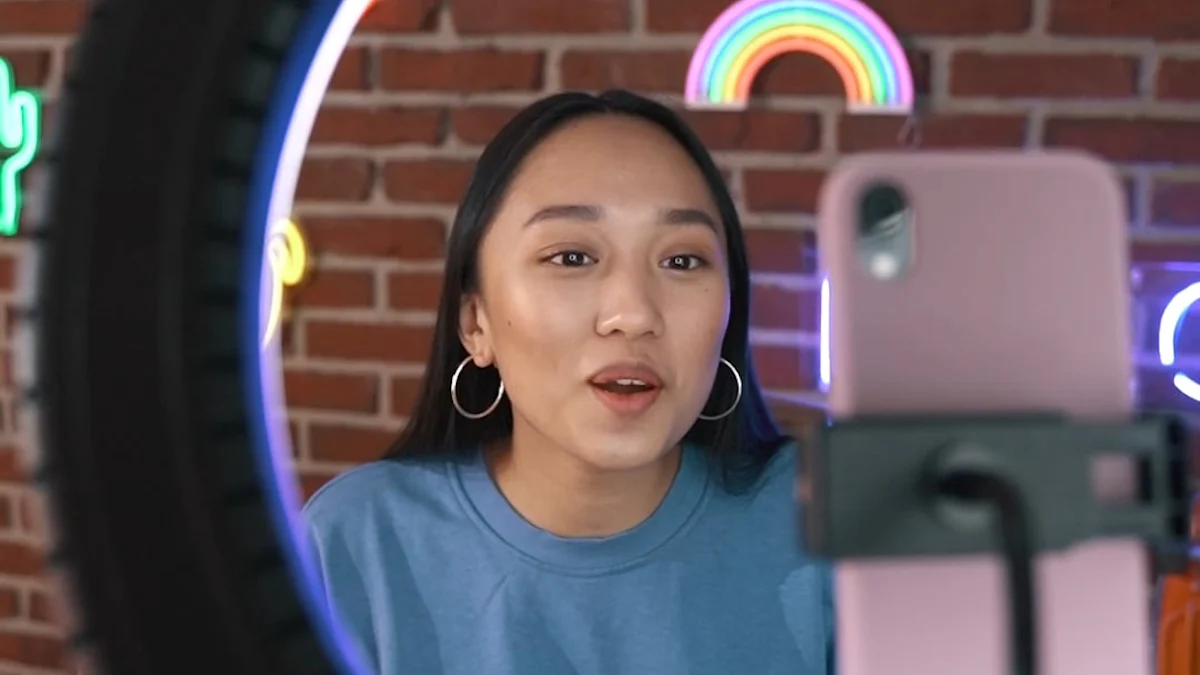TikTok vs Instagram Influencers Key Differences Explained

Social media platforms have transformed how influencers connect with audiences, but not all platforms are the same. TikTok thrives on creativity and spontaneity, drawing in younger users, especially Gen Z. Its short-form videos and trend-driven content make it a hub for viral moments. On the other hand, Instagram offers a polished space where influencers showcase curated visuals and build personal brands. While TikTok boasts higher engagement rates, Instagram influencers excel at storytelling and fostering long-term connections. Choosing between these platforms depends on understanding their unique strengths and how they align with your goals.
Audience Demographics

Understanding the audience demographics of TikTok and Instagram is key to choosing the right platform for your goals. Each platform attracts distinct groups of users, making them suitable for different types of influencer marketing strategies.
Age Groups
TikTok dominates among younger users, especially Gen Z. In the U.S., *32.5% of TikTok users are aged 10-19*, and another 29.5% fall into the 20-29 age group. Globally, about *71% of TikTok users are under 35*. This makes TikTok a hotspot for brands targeting a younger audience with trend-driven content.
Instagram, on the other hand, appeals to a broader age range. While it also attracts younger users, *31% of its audience is aged 25-34*, and it maintains a strong presence among Millennials and even Gen X. If your brand aims to connect with a more diverse age group, Instagram influencers might be the better fit.
Gender Distribution
TikTok leans slightly toward a female-skewed audience. Globally, *54.1% of TikTok users are female*, while 45.9% are male. In the U.S., the numbers vary slightly, with 57% female users. This gender distribution can influence the type of content that performs well on the platform.
Instagram offers a more balanced gender split. Globally, 52% of Instagram users are female, and 48% are male. This balance makes Instagram a versatile platform for brands looking to reach both genders equally.
Geographic Reach
TikTok has experienced rapid growth in emerging markets. Its user base has expanded significantly in regions like Southeast Asia, South America, and parts of Africa. This growth makes TikTok an excellent choice for brands aiming to tap into these fast-growing markets.
Instagram, however, has a well-established presence in Western markets. It remains a go-to platform in North America, Europe, and Australia. If your target audience resides in these regions, Instagram provides a reliable way to connect with them.
Pro Tip: When deciding between Instagram vs TikTok, consider where your audience lives, their age, and their gender preferences. These factors can help you align your influencer marketing strategy with the right platform.
Content and Engagement

When it comes to content and engagement, TikTok and Instagram offer distinct experiences for both influencers and their audiences. Understanding these differences can help you decide which platform aligns best with your goals.
Content Styles
TikTok thrives on short-form video content that feels authentic and trend-driven. The platform encourages influencers to create creative content that resonates with its younger audience. You’ll often see videos featuring trending sounds, viral challenges, and spontaneous moments. This raw and unfiltered approach makes TikTok a hub for originality and quick bursts of entertainment.
Instagram, however, focuses on polished and aesthetically pleasing visuals. Instagram influencers often prioritize high-quality photography and carefully curated posts. Whether it’s a beautifully edited photo or a well-thought-out Reel, the emphasis lies on maintaining a cohesive and professional look. If your brand values sleek and aspirational content, Instagram might be the better fit for your content creation needs.
Quick Tip: TikTok is ideal for brands looking to embrace trends and spontaneity, while Instagram works well for those aiming to showcase a refined and professional image.
Engagement Rates
TikTok stands out with its higher engagement rates, thanks to its algorithm and viral nature. The platform’s “For You” page ensures that even new creators can reach a massive audience. This boosts visibility and encourages users to interact with content through likes, shares, and comments. TikTok’s ability to make content go viral gives it a unique edge in influencer marketing.
Instagram’s engagement rates depend on the type of content shared. Stories, Reels, and carousel posts each offer different ways to connect with followers. While Instagram may not match TikTok’s virality, it excels at fostering steady and meaningful interactions. This makes it a reliable choice for building long-term relationships with your audience.
Did You Know? TikTok’s algorithm prioritizes fresh and engaging content, while Instagram rewards consistency and quality.
User Interaction
TikTok encourages a participatory culture where users actively engage with content. Features like duets, stitches, and challenges invite you to join the conversation and create your own spin on trending topics. This interactive environment fosters a sense of community and keeps users coming back for more.
Instagram, on the other hand, offers a more traditional approach to interaction. You can connect with your audience through likes, comments, and direct messages. Features like Stories and polls also provide opportunities for engagement, but the platform leans more toward passive consumption compared to TikTok’s dynamic and collaborative vibe.
Pro Tip: If you want to spark creativity and participation, TikTok is your go-to. For deeper one-on-one connections, Instagram delivers.
Marketing Potential
When it comes to marketing potential, TikTok and Instagram offer unique opportunities for brands to connect with their audiences. By understanding the advertising options, influencer campaigns, and cost-effectiveness of each platform, you can make informed decisions that align with your goals.
Advertising Options
TikTok provides a variety of advertising formats that cater to its dynamic and trend-driven audience. You can explore in-feed ads, which seamlessly integrate into users' feeds, making them feel less intrusive. Branded hashtag challenges are another standout feature. These challenges encourage user participation, often leading to viral trends that amplify your brand's visibility. Sponsored content created by TikTok influencers also allows you to tap into their creativity and reach.
Instagram, on the other hand, offers a more structured approach to advertising. You can leverage Stories ads, which appear between users' Stories and provide a full-screen immersive experience. Feed posts remain a classic option for showcasing products or services in a polished way. Additionally, influencer partnerships on Instagram allow you to collaborate with creators who align with your brand's image, ensuring a professional and aspirational appeal.
Quick Tip: TikTok works best for brands seeking viral engagement, while Instagram excels at delivering polished and targeted advertising.
Influencer Campaigns
TikTok shines when it comes to creating viral influencer campaigns. The platform's algorithm favors fresh and engaging content, making it easier for both micro and macro influencers to reach a wide audience. For instance, TikTok influencers with fewer than 50k followers boast an impressive 30% engagement rate, far surpassing Instagram's 1.8% for the same follower range. This makes TikTok an excellent choice for brands looking to maximize visibility and spark trends.
Instagram, however, offers a more established ecosystem for long-term brand building. Influencer campaigns on Instagram often focus on fostering trust and loyalty through consistent, high-quality content. While the platform may not match TikTok's virality, it provides a reliable space for nurturing deeper connections with your audience. This makes Instagram ideal for brands aiming to build a strong and lasting presence.
Did You Know? TikTok influencers with over 100k followers achieve an average engagement rate of 5.3%, compared to Instagram's 1.1%. This highlights TikTok's potential for driving impactful campaigns.
Cost-Effectiveness
TikTok stands out as a cost-effective platform, especially for brands working with micro-influencers. The platform's lower CPM (cost per thousand impressions) allows you to reach a large audience without breaking the bank. Combined with its high ROI potential, TikTok offers an attractive option for brands seeking maximum impact with minimal investment.
Instagram, while generally more expensive, delivers proven results for conversions. The platform's higher cost per impression reflects its ability to target specific demographics with precision. If your goal is to drive measurable outcomes, such as sales or sign-ups, Instagram's advertising tools and influencer collaborations can provide significant value.
Pro Tip: Use TikTok for budget-friendly campaigns focused on virality. Choose Instagram when you need a more targeted and conversion-driven approach.
Influencer Characteristics
When it comes to influencers, TikTok and Instagram showcase distinct traits that set them apart. These differences in content quality, creativity, and alignment with brand values can help you decide which platform fits your goals.
Content Quality
TikTok influencers focus on creativity and authenticity. Their content often feels spontaneous and relatable, which resonates strongly with a younger audience like Gen Z. For example, *Addison Rae’s bubbly personality and casual dance videos make her followers feel like they’re hanging out with a friend*. This raw and unfiltered style creates a sense of connection that drives engagement.
Instagram influencers, however, prioritize high-quality, professional content. Their posts often feature meticulously crafted visuals, polished aesthetics, and cohesive themes. Whether it’s a beautifully edited photo or a behind-the-scenes moment, Instagram influencers humanize their content while maintaining a professional edge. This approach makes Instagram the go-to platform for creators pursuing content creation as a full-time career.
Takeaway: If you value authenticity and relatability, TikTok influencers deliver. For sleek, aspirational visuals, Instagram influencers excel.
Creativity and Trends
TikTok thrives on trends. Influencers on this platform excel at adapting to viral challenges, creating duets, and jumping on trending sounds. This trend-driven culture allows influencers to stay relevant and keep their audiences engaged. For instance, Charli D’Amelio’s participation in viral dance challenges has made her one of TikTok’s most successful influencers. The platform’s short-form format encourages quick bursts of creativity that can have a massive impact.
Instagram influencers, on the other hand, emphasize personal branding and niche expertise. They focus on building a consistent identity that aligns with their audience’s interests. Whether it’s fashion, fitness, or travel, Instagram influencers carve out a space where they can showcase their expertise. This approach fosters trust and loyalty, making Instagram ideal for long-term influencer collaborations.
Pro Tip: Use TikTok for trend-driven campaigns that need quick traction. Choose Instagram for campaigns that require niche expertise and personal branding.
Alignment with Brand Values
TikTok aligns well with brands targeting a younger audience that values creativity and spontaneity. Its participatory culture and trend-driven nature make it perfect for brands looking to create buzz. For example, *Chipotle’s partnership with TikTok influencers led to viral hashtag challenges that boosted brand awareness*. This platform works best for brands that want to embrace fun and originality.
Instagram, however, suits brands seeking polished and aspirational content. Its structured environment allows influencers to showcase products in a way that feels premium and trustworthy. Influencer marketing on Instagram has proven effective for brands aiming to build a strong and lasting presence. If your brand values professionalism and consistency, Instagram offers the perfect space to connect with your audience.
Quick Tip: TikTok is your go-to for younger, trend-driven audiences. Instagram works better for brands that want to maintain a polished image.
Practical Tips for Choosing the Right Platform
Choosing between TikTok and Instagram for your influencer campaigns can feel overwhelming. Each platform offers unique strengths, but the key lies in aligning these with your brand’s goals. Here’s how you can make an informed decision.
Define Your Target Audience
Understanding your audience is the first step. Who are you trying to reach? TikTok attracts a younger demographic, with a strong presence among Gen Z and Millennials. If your product or service resonates with this age group, TikTok could be your ideal platform. On the other hand, Instagram caters to a broader age range, including Millennials and Gen X, making it suitable for brands targeting diverse audiences.
Consider your audience’s interests and geographic location as well. TikTok thrives in emerging markets, while Instagram dominates in Western regions. If your target audience resides in North America or Europe, Instagram might offer better reach. For brands looking to tap into Southeast Asia or South America, TikTok provides an excellent opportunity.
Pro Tip: Create a detailed profile of your target audience, including their age, location, and preferences. This clarity will guide your platform choice.
Align with Your Marketing Goals
Your marketing goals should dictate your platform strategy. If you aim to create buzz and go viral, TikTok’s short form content and trend-driven culture make it the perfect choice. Its participatory features, like challenges and duets, encourage users to engage with your brand in creative ways. This makes TikTok a powerful tool for video marketing strategy.
For brands focused on long-term growth and polished branding, Instagram excels. Its emphasis on high-quality visuals and storytelling supports content marketing efforts. Instagram influencers can help you build trust and loyalty through consistent, aspirational posts. Whether you’re launching a new product or strengthening your brand identity, Instagram offers a reliable path.
Quick Tip: Use TikTok for campaigns that need quick traction and Instagram for building a lasting brand presence.
Evaluate Influencer Fit
The right influencer can make or break your campaign. Look for influencers whose style and values align with your brand. On TikTok, influencers often create authentic, trend-driven content that feels relatable. This approach works well for brands seeking to connect with younger audiences in a casual, engaging way.
Instagram influencers, however, focus on curated and professional content. Their polished posts can elevate your brand’s image and appeal to a more aspirational audience. Evaluate their engagement rates, content style, and follower demographics to ensure they align with your goals.
Did You Know? Collaborating with influencers who share your brand’s values enhances authenticity and boosts campaign success.
By defining your audience, aligning with your goals, and choosing the right influencer, you can maximize the impact of your campaigns. Whether you choose TikTok or Instagram, understanding these factors will help you make a strategic decision.
Test and Measure
Testing and measuring your campaigns on TikTok and Instagram is essential to find what works best for your brand. Start by experimenting with both platforms. Create unique campaigns tailored to each platform’s strengths. For TikTok, focus on short-form, trend-driven videos that encourage participation. On Instagram, prioritize polished visuals and storytelling that align with your brand identity.
Track performance metrics to evaluate success. Look at engagement rates, reach, and conversions. TikTok’s analytics can show how well your content resonates with its younger, trend-focused audience. Instagram’s insights provide detailed data on follower demographics, post interactions, and website clicks. Use these tools to understand how your audience responds to your campaigns.
Compare the results from both platforms. Identify which one delivers better ROI for your goals. If TikTok drives more engagement but Instagram generates higher conversions, adjust your strategy accordingly. Testing isn’t a one-time process. Continuously refine your approach based on the data you collect.
Pro Tip: Use A/B testing to compare different types of content or influencer collaborations. This method helps you pinpoint what resonates most with your audience.
By testing and measuring, you can make informed decisions and maximize the impact of your influencer marketing efforts.
TikTok and Instagram offer unique opportunities for influencer marketing, each catering to different audiences and goals. TikTok thrives on creativity and virality, making it perfect for engaging younger users with trend-driven content. Instagram, however, excels at polished branding and visual storytelling, appealing to a broader demographic. To succeed, you need to align your platform choice with your marketing objectives. Whether you aim to spark viral moments or build a lasting brand presence, understanding these platforms’ strengths will help you connect with your audience effectively and maximize your impact.
FAQ
How do TikTok and Instagram influencers monetize their content differently?
TikTok influencers have several ways to earn money. They often rely on sponsored posts, brand partnerships, and the TikTok Creator Fund. The Creator Fund pays influencers based on the views and engagement their videos receive. TikTok also offers a live streaming feature where creators can receive virtual gifts from their audience. These gifts can be converted into real money, making live interactions a lucrative option.
Instagram influencers, on the other hand, focus more on brand collaborations and affiliate marketing. They earn by promoting products through posts, Stories, and Reels. Many also use affiliate links to earn commissions from sales generated through their content. Additionally, some Instagram influencers sell their own products or services, such as e-books, courses, or merchandise, leveraging their polished personal brand.
Which platform is better for reaching Gen Z?
TikTok is the go-to platform for connecting with Gen Z. The majority of TikTok’s user base falls under the age of 25, making it a hotspot for younger audiences. Its trend-driven culture and short-form videos resonate strongly with this demographic. If your goal is to engage with Gen Z, TikTok offers the perfect environment.
Instagram, while still popular among younger users, has a broader age range. It appeals to Millennials and even Gen X, making it a better choice if you want to target a more diverse audience. For brands aiming to reach both younger and older demographics, Instagram provides a balanced option.
What type of content performs best on TikTok versus Instagram?
TikTok thrives on short, authentic, and trend-driven videos. Content that feels spontaneous and creative tends to perform well. Challenges, duets, and viral sounds dominate the platform, encouraging users to participate and share. If you’re looking to create fun, engaging, and fast-paced content, TikTok is your playground.
Instagram, however, rewards polished and visually appealing content. High-quality photos, curated Reels, and cohesive aesthetics are key to success. Storytelling also plays a significant role, with influencers using Stories and captions to connect on a deeper level. For brands that value professionalism and consistency, Instagram offers the ideal space.
Can small brands benefit from TikTok influencer marketing?
Absolutely! TikTok’s algorithm levels the playing field, allowing even small brands to gain massive visibility. Partnering with micro-influencers on TikTok can be cost-effective and impactful. These influencers often have highly engaged audiences, making their recommendations feel authentic and trustworthy. TikTok’s participatory culture also helps small brands create buzz through challenges and trends.
Pro Tip: Focus on collaborating with influencers whose audience aligns with your niche. This ensures your message reaches the right people without overspending.
Is Instagram still relevant for influencer marketing in 2024?
Yes, Instagram remains a powerhouse for influencer marketing. Its established ecosystem and diverse user base make it a reliable platform for building long-term brand presence. Instagram’s tools, like Stories, Reels, and in-app shopping, provide multiple ways to engage with audiences and drive conversions.
While TikTok excels at virality, Instagram offers stability and trust. Many brands use Instagram to showcase their products in a polished way, fostering loyalty and credibility. If your goal is to build a strong and lasting connection with your audience, Instagram is still highly relevant.
How do engagement rates compare between TikTok and Instagram?
TikTok generally boasts higher engagement rates, especially for influencers with smaller followings. The platform’s algorithm promotes fresh and engaging content, giving creators a chance to go viral. For example, TikTok influencers with fewer than 50k followers often achieve engagement rates of around 30%.
Instagram’s engagement rates vary depending on the content type. While it may not match TikTok’s virality, it excels at fostering steady interactions. Features like Stories and carousel posts encourage meaningful connections, making Instagram a strong choice for long-term engagement.
What are the costs of working with influencers on TikTok versus Instagram?
TikTok tends to be more budget-friendly, especially for brands working with micro-influencers. The platform’s lower CPM (cost per thousand impressions) allows you to reach a large audience without spending a fortune. Combined with its high ROI potential, TikTok offers excellent value for brands with limited budgets.
Instagram, while more expensive, delivers proven results for conversions. Its higher costs reflect its ability to target specific demographics with precision. If your campaign focuses on measurable outcomes like sales or sign-ups, Instagram’s tools and influencer collaborations can provide significant value.
How do I choose the right platform for my brand?
Start by defining your target audience. If you’re aiming to reach Gen Z or younger Millennials, TikTok is your best bet. For a broader demographic, including older Millennials and Gen X, Instagram offers better reach. Next, align your choice with your marketing goals. TikTok works well for creating buzz and going viral, while Instagram excels at polished branding and long-term growth.
Quick Tip: Experiment with both platforms to see which one resonates most with your audience. Use analytics to track performance and adjust your strategy accordingly.
Are TikTok influencers more creative than Instagram influencers?
TikTok influencers often excel at creativity due to the platform’s trend-driven nature. They adapt quickly to viral challenges, sounds, and formats, keeping their content fresh and engaging. This spontaneity makes TikTok a hub for originality.
Instagram influencers, however, focus on personal branding and niche expertise. Their content may not feel as spontaneous, but it reflects a high level of professionalism and thoughtfulness. Both platforms showcase creativity in different ways, so the choice depends on your brand’s style and goals.
Can I use both TikTok and Instagram for my campaigns?
Yes, using both platforms can maximize your reach and impact. TikTok helps you create buzz and engage younger audiences, while Instagram builds trust and fosters long-term relationships. By leveraging the strengths of both platforms, you can create a well-rounded influencer marketing strategy.
Pro Tip: Tailor your content to each platform’s unique strengths. Use TikTok for trend-driven videos and Instagram for polished visuals and storytelling.
See Also
Exploring The Role Of A TikTok Influencer
Advantages And Disadvantages Of TikTok Influencer Marketing
Defining TikTok Influencer Marketing And Its Functionality
